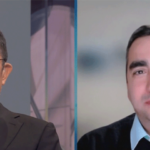Myth Busting Variable Interest Entities (VIEs) With Top Hong Kong Private Equity Lawyer

Despite the variable interest entity (VIE)’s multi-decade history, the legal business structure continues to perplex many investors, especially when it comes to US-listed Chinese companies. We had the opportunity to sit down with Marcia Ellis, the current Global Chair of the Private Equity Group at Morrison & Forrester, Hong Kong. In our interview, Ellis, who pioneered some of the first use cases for VIEs in China, dispelled common misconceptions around VIEs, discussed their history, and outlined how recent regulatory events have been positive for the structure.
Below we have included an abridged summary of our conversation. You can also listen to our complete discussion through the MP4 file embedded below.
Brendan: We recently found the fantastic article you published on VIEs in the Hong Kong Law Society’s official journal. These articles gave a complete and concise history of VIEs and why public and private Chinese companies use them in the US, Hong Kong, and Mainland China.
I would like to start by asking you about your background. I noticed that you went to Princeton and then got your law degree from Columbia. But, I am curious how you ended up working in Hong Kong and how long you have been there?
Marcia: Like many people my age, I was a China person first, and then I got into the law.
I spoke Chinese and was interested in China. After studying East Asian Studies at Princeton, anthropology at National Taiwan University, and getting a law degree at Columbia, I moved to Hong Kong in 1996 and joined the international law firm, Paul Weiss.
Paul Weiss was still doing Unicom structures (a.k.a. China-foreign structures) at that time, so I became very involved in that immediately. I was doing paging and mobile networks with Unicom and the People's Liberation Army, which was still in business back then. I also advised a client on a joint venture with the Ministry of Radio Film & Television, the predecessor of today's State Administration of Radio, Film, and Television (SARFT), for a national cable backbone, that was never completed.
I was immediately involved in this telecoms world. But, due to the dot-com bubble coming to China, that quickly morphed into advising on investments in internet businesses for both telecoms/internet companies and private equity funds. This is when we started using the VIE structure.
I continue to advise lots of PE funds, such as the SoftBank Vision Fund, on their investments in China, which often involve VIE structures.
Brendan: In your own words, what is a VIE, and why do companies utilize this structure instead of a more traditional one?
Marcia: At first, we thought the VIE would be just a short-term thing because it was just a means of allowing foreign investments in companies in sectors where foreign investment was restricted or prohibited. The primary sector that we were dealing with was internet and E-Commerce. There was an expectation that, with China’s accession to the World Trade Organization (WTO), China would eventually open the internet sector to 100% foreign investment, and this structure would just disappear. In the early VIE documents, we had all kinds of provisions that would allow the structure to convert into a direct investment by the foreigners into the listed entity, but that did not happen.
The idea was that foreigners would invest in a company, usually a Cayman company, that has a subsidiary in China that is a wholly foreign-owned enterprise (WFOE) and that WFOE will enter into contracts with the actual licensed internet company. Those contracts stipulate that the internet company will pay over any profits to the WFOE as consulting fees, etc. Then, another set of contracts, which we call the control contracts, gives a certain amount of control by this WFOE over the licensed entity.

The VIE structure was designed with US accounting rules in mind, so a VIE is a US accounting concept that came up basically because of the Enron fiasco. Enron had a lot of off-book entities that it was not consolidating into its financials. Therefore, the VIE rules were actually rules requiring companies to consolidate into their financials the financials of certain entities over which they had some degree of control. So, it was meant as a safeguard in accounting so that people saw the complete picture of a company's business interests, including all companies that were in effect subsidiaries of such company, regardless of whether the company held any equity interest in such effective subsidiaries. The difference in China is that the companies want to consolidate the financials of the VIE.
The VIE structure is not ideal, but it allowed foreigners to invest early on in China's economic rise. Admittedly, there was this grey area in Chinese law that they used to their advantage. But, there is alignment with the underlying shareholders for the vast majority of the US holdings. As long as the largest shareholder of the Cayman listco is also the main shareholder of the VIE, there will be an alignment of interests. Pretty much all the time, the employee stock option plan (ESOP) is comprised of shares in the Cayman company. I don't know of any situations where anybody gets ESOP equity that would be equity of the actual domestic licensed company because that just doesn't even make sense. That equity is illiquid so no one would want it.
Brendan: We are now seeing the Mainland regulators acknowledging the structure. I know you have noted that this change has been somewhat under-reported. Does this mean that China approves of VIEs?
Marcia: Essentially, yes. Over the 20 years that the structure has existed, the regulators went back and forth on approving the VIE structure. But, in the last three to five years, everything has been moving toward solid signs of approval or, at least, acceptance of the structure. The big turning point was the Foreign Investment Law. When a draft of the law came out, it contained anti-VIE provisions. It took years for the actual final version of the foreign investment law to come out. But, when it did come out, those anti-VIE provisions were gone. Our understanding is that it took years for the final version to come out because arguments were going on internally among the different agencies and regulators about what they were going to do about the VIE structure and whether they were going to have these anti-VIE provisions. I suppose that eventually, those who were pro or accepting of VIEs prevailed, and that's why we do not see those provisions in there today.
The State Administration on Market Regulation (SAMR) is now forthright in saying that they will review mergers that involve a VIE structure, which is a positive sign. Before, they would not accept any merger applications involving a VIE because they did not want to imply that they approved the structure by approving the merger.
Brendan: A common misconception about VIEs is that they are only used to go public overseas, but they were first used when these companies were in the private stage. Is this why some listings in Hong Kong and Mainland China contain VIEs?
Marcia: That's right. The purpose of the VIE structure is to allow foreigners to invest, which can be at any stage.
You set up a VIE structure because an American or other foreign private equity fund wants to invest in a Chinese company. But, they can't invest directly into the licensed entities, so you say okay, I will set up this VIE structure that allows you to invest, with the intention of an eventual exit through a US or Hong Kong listing. Perhaps in the future, the company decides it actually wants to do a Chinese A-share listing but the company already has this VIE structure set up. That's how the company's investors have come in, so the easiest means of doing an A-share listing would be to list the shares of the Cayman company in the VIE structure. The alternative would be to unwind the whole VIE structure and list the shares of the VIE, but then the foreign investors cannot participate in the listing.
Brendan: Based on your work, do you have an opinion about the Holding Foreign Companies Accountable Act (HFCAA)? and how Chinese companies will navigate it?
Marcia: The way I personally touch this is in my advisory work for private equity companies on take-privates of US-listed companies. Opportunities for take-privates are becoming more common as HFCAA concerns mount. As we approach the end of the three-year compliance period, there will be more pressure for the good companies to delist from the US and re-list in other places.
Brendan: Ok. The only issue is the IPOs from 2021 and 2020, including KE Holdings and Full Truck Alliance. They must wait two years to relist, according to HKEX’s rules. Although HKEX says it has some discretionary power to grant exemptions, jumping that two-year hurdle could be a big ask.
Marcia: I'd have to ask my Hong Kong equity capital markets partner, but for a large enough company that's doing well, they may be able to exercise that discretion. The two-year listing requirement is an important guard rail because shareholder class action suits are not feasible in Hong Kong. There are no provisions in Hong Kong law that would allow for a class action suit against a publicly listed company. Thus, the stock exchange takes its gatekeeper role very seriously. They take what, from our perspective, looks like a paternalistic approach. In the US, the SEC fulfills this paternalistic role. In the US, the main guard rails are the requirement of full disclosure and the shareholder class action regime. In the US, you know that if a company with issues that were not fully disclosed lists, there is bound to be a shareholder class-action lawsuit, and that company will have to pay. So, HKEX does strike a very different tone regarding the vetting process.
Brendan: I see. That is very interesting. We are constantly monitoring the situation on behalf of our clients, and we appreciate your insight. Thank you, Marcia. This has been just fantastic.
KWEB Holdings Mentioned:
- Tencent (10.42% of KWEB Net Assets as of 1/18/2022)
- Alibaba (6.92% of KWEB Net Assets as of 1/18/2022)
- KE Holdings "Beike" (4.43% of KWEB Net Assets as of 1/18/2022)
- Full Truck Alliance (3.10% of KWEB Net Assets as of 1/18/2022)
r-ks-sei

















